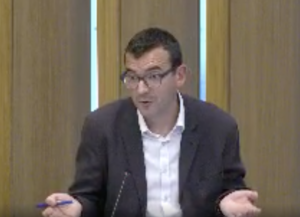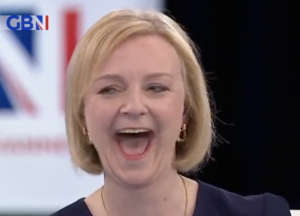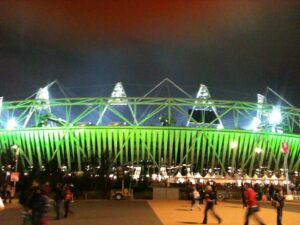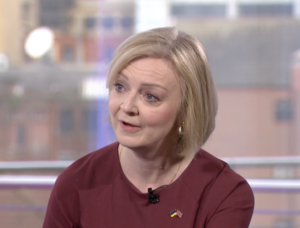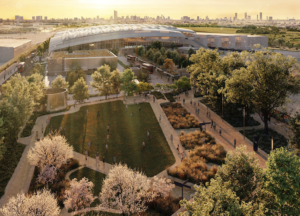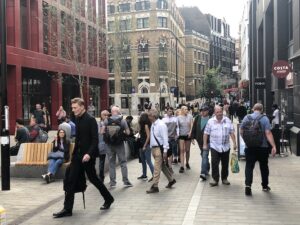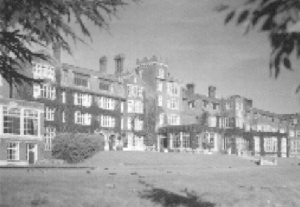The word “university” can signify separation from society, conjuring images of red brick palaces and remote dreaming spires. In London, reliably, such characterisations are often confounded by reality. Diana Beech, chief executive of London Higher which represents more than 40 of the city’s universities and higher education colleges, is at pains to emphasise how the sector is woven into the wider fabric of the capital, not least by simple virtue of its size.
“They collectively educate over 485,000 students,” she says of London Higher’s membership, when we meet at a café in Clerkenwell. “It’s a massive part the London population”. Part of Beech’s mission is for this presence to be more widely recognised. “They are an integral part of London society, and I really want to bring that out”. Not all of the 485,000 live within Greater London, but Beech says that most do, and, revealingly, that many are what she describes as “commuter students” – Londoners who live at home and travel daily to and from their place of higher learning in their city.
That is an indication both of the outlook of London’s universities and the composition of its student population. It is diverse in many ways and, Beech explains, encompasses “a lot of mature students, a lot from black and minority ethnic communities, people with caring commitments – all the reasons why you might not want to pack up your bags and go elsewhere”.
She underlines that she is “proud of the international students we attract”, but “those are local Londoners and there are a lot of local universities. If those universities weren’t here, there are a lot of Londoners who wouldn’t get a higher education because they’re not going to move anywhere else”. Beech stresses this with the rising cost of living much in mind. “Students across the country are really thinking, can I afford this, do I want to take on the extra burden? So students do have a bit more incentive to stay at home. I think we might be seeing a lot more local students.”
Her enthusiasm for universities being among what have become termed “anchor institutions” stems from impressive prior experience as an adviser to rapid succession of higher education ministers – from Sam Gyimah to Chris Skidmore to Jo Johnson and then, fleetingly, to Skidmore again. A steady theme amid the frantic the turnover was the report of the Civic University Commission, chaired by Bob Kerslake, which encouraged universities to do more for their localities.
Beech and London Higher’s commitment to its recommendations is manifested in the organisation’s civic map, released last year and frequently updated, which illustrates, says Beech, “that universities have their fingers in so many pies and really are such a force for good in their localities” through collaborations with businesses, sustainability and creative projects and with nearby and neighbouring communities: St George’s, University of London has a science engagement programme at Wandsworth Prison; Queen Mary University in Mile End collaborates in Bengali London cultural events; innovative Barking & Dagenham Council attracted a branch of the University of Coventry devoted to widening participation.
The value of building such bridges can only increase, Beech maintains, with demand for university places from statistically under-represented groups likely to increase in line with a boom in the number of young adults set to last until the mid-2030s. Such potential “first generation students” – people whose parents didn’t go to university – benefit from being shown that “this a place you can go to, you are accepted, you are the future.”
London Higher includes Access HE, a pan-London network body devoted to bringing new learners into the system. Its work includes helping to deliver the Sadiq Khan’s £44 million skills-building initiative in the creative industries.
Funding is, unsurprisingly, a “front and centre” issue for universities everywhere, Beech says. Student tuition fees have been frozen at a maximum of £9,250 a year since 2017, but inflation means the money does not spread as far. Former education secretary Gavin Williamson’s dazzling gift to the capital was that so-called London weighting would be ended in the name of “levelling up”.
Beech, writing about this decison for On London last year, noted – with impressive restraint – that the regulator for the higher education sector, the Office for Students had “confirmed that operating costs for universities remain higher in London than elsewhere”, effectively affirming that the case for London continuing to receive this assistance remained and that the cuts risked reducing London higher education to an “enclave for the wealthy”.
Rents are big, courses can be expensive, the cost of living has always been higher here. And yet, as Beech says, the axe fell “overnight, no preparation, no leeway and the universities had to handle a £64 million cut across London”. They have coped, “but it’s getting increasingly difficult now in the current environment we’re in. I hate to say this, but serious decisions are going to have to be made on some of those courses if they haven’t got enough students.” Those “first generation” students, who might need some extra help with adapting and thriving, could end up going without it.
Students from overseas are, perhaps paradoxically, a vital part of holding things together. A report for the Higher Education Policy Institute – for which Beech worked before being recruited by Gyimah – published last year said there had been over 70,000 first-year students alone enrolled in London higher education institutions in 2018/19 out of 254,000 in the UK as a whole.
In June, the House of Commons public accounts committee recognised their importance in the form of a rebuke for universities for relying on them too heavily. “Too many providers are too heavily dependent on overseas student fees to maintain their finances, research base and provision,” said Labour committee chair Meg Hillier, MP for Hackney South & Shoreditch. “That is not a satisfactory situation in a sector that government is leaning on to boost the nation’s notoriously, persistently low productivity.”
Beech, observing that the government not long ago set a strategic target for increasing international student numbers, looks at the issue differently: “I want to put our members in the forefront of upping this international student number. For all those reasons I’ve just explained, we need those international students to maintain the excellence of our higher education system for local Londoners.” London Higher will release an international education strategy for London next week.
Meanwhile, the Department for Education had come up with proposals which, Beech believes, would penalise disadvantaged Londoners. One suggests introducing a minimum exam grade requirement to be eligible for a student loan, reducing universities’ discretion when awarding places, their ability to assess a potential student in the round.
“That would exclude 40% of pupils who are on free school meals, almost 50% of black and ethnic minority Londoners and 86% of those with special educational needs,” Beech says. “There are lots of reasons why most disadvantaged students don’t get the grades – they don’t have the web access, they don’t have the study environments. It doesn’t mean they’re not intellectually capable.”
Beech was speaking shortly before the turmoil unleashed by new Prime Minister Truss and current higher education minister Andrea Jenkyns’s snorting remarks about metaphorical degrees in Harry Potter studies at the Conservative Party conference, which Beech has been attending.
What sort of policies and postures emerge from the wreckage of the Tories’ Birmingham gathering remains to be seen. Whatever they may be, London’s higher education sector has an impressive champion at a time when the city badly needs its many strengths.
On London strives to provide more of the kind of journalism the capital city needs. Become a supporter for just £5 a month. You will even get things for your money. Details here.

